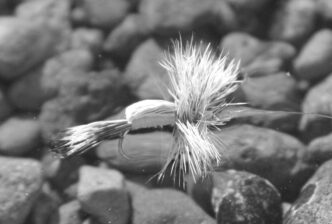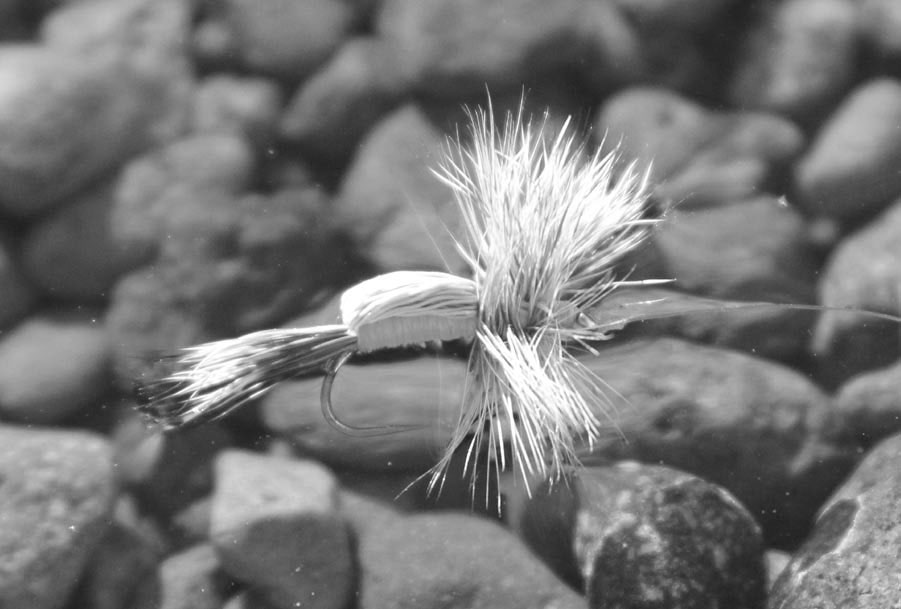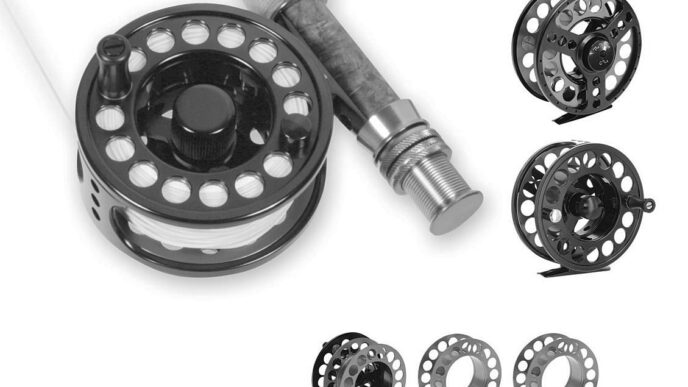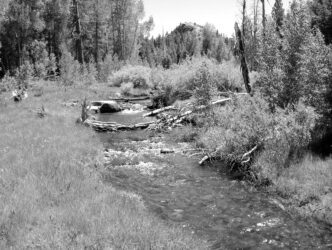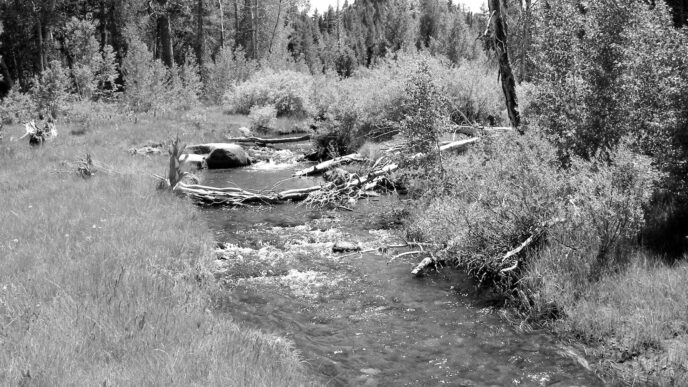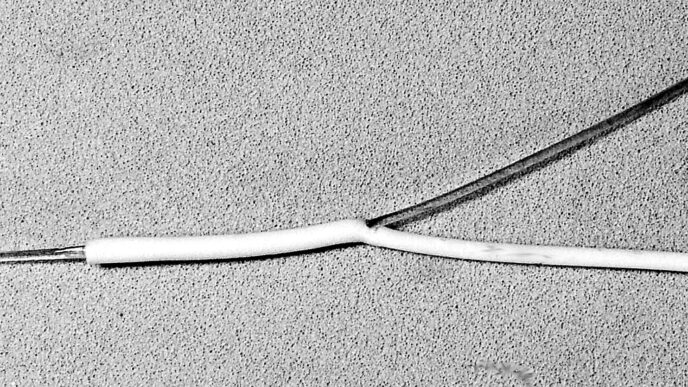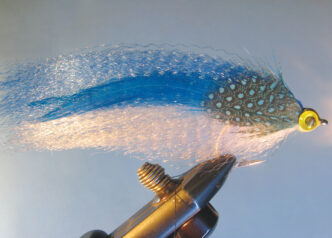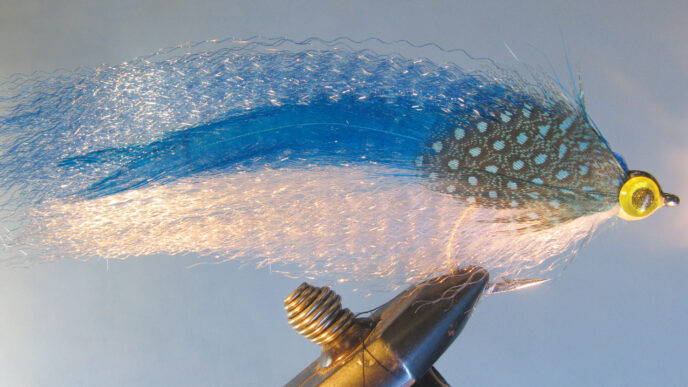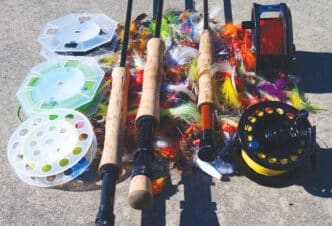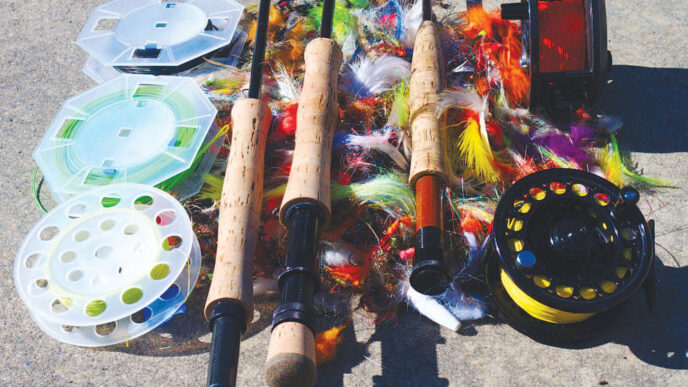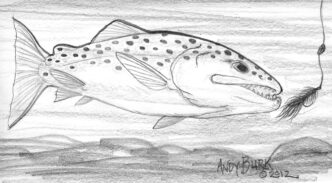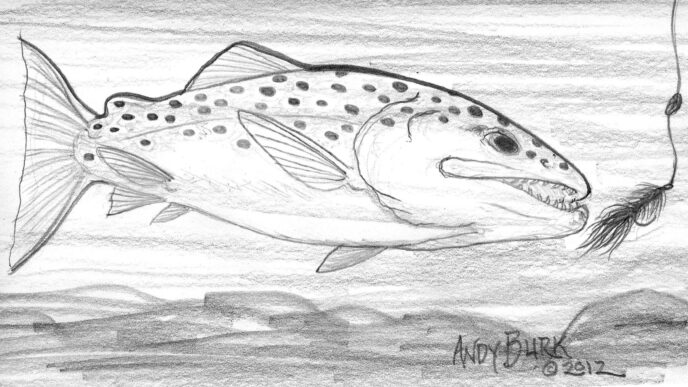Getting a dry fly to float and stay afloat has been one of fly fishing’s oldest frustrations. It must have frustrated Theodore Gordon, the father of American dry-fly fishing. Floatants were not available in his day. He would be amazed at the huge variety of modern floatants now on the market.
Today, most fly fishers carry a fly floatant, and many of us also carry a product containing a desiccant. We use them for the same purpose — to float a fly — but in fact, they’re very different things. They actually work in opposite ways, and understanding what they are and how they work — separately and together — can help any angler use these products more effectively. And once you know what they are and what they do, I can show you how to make your own.
To understand how floatants and desiccants work, we first need to learn a bit about water and how it interacts with other substances. Have you ever noticed what happens when two adjacent water droplets on a waxed car touch each other? They not only merge, but they actually move toward each other to form a larger spherical water droplet. That does not happen with fluids such as gasoline or alcohol. Why?
Water molecules are like small magnets that attract each other. This attraction causes the drops to flow toward each other. The same attractive force also creates the surface tension that allows our heavier-than-water flies to float.
Because water molecules act like small magnets, some compounds can attract water or repel water. Compounds that attract water are called “hydrophilic,” or waterloving, and compounds that repel water are called “hydrophobic,” or water-hating. When some hydrophilic compounds attract and also absorb water, they are called “hygroscopic.” For example, salt is hygroscopic, and it gets moist and clumps when left in the open. Oil is hydrophobic and separates when mixed with water.
Hydrophobic or water-hating compounds are perfect for floating flies. We want our dry flies to hate (repel) water. Fly fishers must have noticed early on that water and oil don’t mix. As early as 1938, in his book Trout, Ray Bergman published a recipe for a fly floatant that used paraffin dissolved in white gas as a carrier fluid. Instead of paraffin, a modern chemist uses compounds specifically designed to repel water and nonflammable carrier fluids instead of white gas. Floatants can work in two ways — passively and actively. Passively, they serve as a physical barrier — that is, they work by being absorbed into the dubbing of the fly and coating the materials to prevent water from entering the fly. But floatants also contain materials that are hydrophobic and actively repel water so that it cannot be absorbed. The best floatants are superhydrophobic.
The need for superhydrophobic compounds has led to the use of silicone compounds in various formulations. The silicones are mixed in a carrier and applied as a spray, semisolid gel, liquid, or powder. Hydrophobic powder floatants are composed of fumed silica crystals treated with a hydrophobic coating of siloxane or silicone oil.
Desiccants are the opposite of floatants. While floatants repel water, desiccants attract and absorb water. They are strongly hygroscopic. Desiccants used in fly fishing are made from silica gel, which is both cheap and readily available. Silica gel is not really a “gel,” but a porous crystalline form of silica that traps water. Silica gel is the stuff in those small bags that are packaged with many products to prevent moisture damage.
The opposite properties of floatants and desiccants dictate how they should be used. Because floatants actively repel water, they cannot dry a fly that gets wet. The fly must be partially dried first by squeezing the excess water out with a natural amadou patch or some other material. Some fly fishers use Shamwow, but I use a square of synthetic chamois. Once the excess water has been removed, the rest can be chemically absorbed with a desiccant. Then the fly will be dry enough to retreat with a floatant. If the floatant is applied directly to the wet fly, the water in the fly repels the floatant, making it less effective. Even worse, floatant applied over water can seal the water into the fly.
Types of Floatants and Dessicants
Now that we understand floatants and desiccants, we can divide the various products into six main categories by formulation, consistency, and usage.
- Grease/silicone-based semisolid pastes or gels. These are the most popular forms of floatant and include Mucilin, Aquel, and Gink. They work passively by filling in the spaces between the dubbing so that water cannot penetrate, and they also actively repel water. These products can be used on all dry flies and on monofilament leaders for the “greased leader” technique. However, they cannot be used on Cul de Canard (CDC) feathers because they mat the fibers.
- Tiemco Dry Magic is also a gel, but it deserves its own category separate from Aquel and Gink. It is the only nonmatting gel product that is formulated for CDC. It can be used on all flies. Use it very sparingly on CDC, followed by hydrophobic powder (category 4 below).
- Liquids or sprays with an evaporating carrier containing a hydrophobic chemical to coat the fly. Loon Outdoors Hydrostop, Spray Flote, Cortland Dry Fly Spray, and Loon Fly Spritz are examples. They can be pretreatments that are dried overnight, or they can be applied when at the stream. I have used these products on standard dry flies, but have not tested them on CDC flies.
- Powder floatants. These include Frog’s Fanny and Loon Outdoors Blue Ribbon Floatant. They are hydrophobic treated fumed silica crystals. These powders are commonly used on CDC because they do not clump the CDC fibers, and they can be used on all dry flies.
- Silica gel desiccants such as Cortland Dry-Ur-Fly and Loon Outdoors Easy Dry. These absorb water. They dry the fly, but provide no waterproofing. They can be used on all flies, including those with CDC.
- Combination products composed of (4) and (5). These include Loon Outdoors Top Ride and Shimazaki Dry Shake. The silica gel absorbs the water from the fly, and the hydrophobic fumed silica floatant powder provides water repellency. These products can be confused with the powder floatants in (4), that is, with products that contain hydrophobic powder only, and the silica gel desiccant is often taken to be a floatant. These combination products are also safe for CDC flies. Most novice fly fishers will apply floatant indiscriminately to the entire fly. However, a more effective way is to apply the products only to the portion of the fly that you want to float. It makes little sense, for example, to apply floatant to the portion of an emerger pattern that is designed to sink into or under the film. For renewing waterlogged emerger patterns, type 3 and type 6 products are not the best products, because they treat the entire fly. Emerger and similar patterns should be treated with Type 5 desiccant, followed by a targeted application of Type 1 or 2 floatant. With a type 4 floatant, the Frog’s Fanny brush applicator should be used for this purpose, rather than shaking the whole fly in the floatant.
Making Your Own Floatant
Now that we understand floatants and desiccants, we can make our own floatant using cheaper commercial products. I have separated them into the same categories as above.
For a type 1 floatant, the most widely used substitute is Unscented Albolene Cleanser. You can buy it in most department stores. As far as I know, there is no substitute for Tiemco Dry Magic, the type 2 floatant.
The type 3 floatant substitutes are Scotchguard or other silicone-based spray waterproofing products for shoes and clothing. Spray the material in a small glass container and dip the fly into the solution, place the fly on a paper towel, and allow it to dry overnight.
Ray Bergman’s original formula of paraffin in white gas is a type 3 floatant. Because the evaporating white gas carrier is flammable, it should not be used in the home, but at the stream.
Bergman’s floatant will thicken and gel as the weather cools, so there is no “correct” formula. The summer formula is half a bar of paraffin wax, shaved and dissolved in a quart of white gas, Coleman fuel, or naphtha. Mix it outside and store it in an unbreakable metal can made for flammable liquids, such as an old paint thinner can.
Put a small amount in a small glass container with a tight cap and dip the fly into the liquid, then use a few false casts to evaporate the carrier liquid. As the weather cools, add more white gas to prevent gelling.
Do-it-yourself Type 4, 5, and 6 products are best discussed as a group. A cheap way to make them is to buy the raw materials on your own. Like most other floatant materials, both type 4, fumed silica floatant, and type 5, silica gel desiccant, are sold more cheaply for other purposes.
Type 4 powder floatant is sold for bow hunting as “Gateway Feather Powder.” Type 5 silica gel is used to dry flowers and can be bought in bulk. Small packets of silica gel also are commonly packed with electronic equipment or new shoes. If you save and place them in your fly box for off-season storage, they will keep your hooks from rusting. You can also open the packets and use the crystals as a type 5 desiccant.
Because the commercial sources for these products frequently change, use Google Product Search and type in “Gateway Feather Powder” or “silica gel flower drying crystals” for the best current prices. Type 4 powder floatant and type 5 silica gel desiccants can be used alone or as a combination. I use Fuji 35-millimeter film containers to hold the floatant or desiccant. Discarded film containers are harder to find than they were before digital photography became the norm, but they still can be had free for the asking at film processors. Make a notch in the lip of the film container above the inner sealing ridge for a tippet slot. The sealing ring keeps the product in and will not damage the tippet. Other containers can be improvised in the same way.
For Type 6 combination products, mix silica gel and floatant powder together in a 50/50 ratio by volume for your own version of Top Ride or Dry Shake.
Eventually, desiccants will stop absorbing water. You can recharge desiccants by pouring the used silica gel into a ceramic plate or bowl. Microwave on high for about 30 seconds for two cycles, and that will drive out the water as steam. You may hear some popping as the escaping steam fractures the crystals. Allow the crystals to cool between the cycles. After the crystals cool, put them back into the shaker container. Add fresh fumed silica for the combination products. This is a great way to renew the silica gel in Shimazaki Dry Shake or Top Ride. There is no need to throw away the used containers. Just renew the desiccant and resupply with floatant powder.



